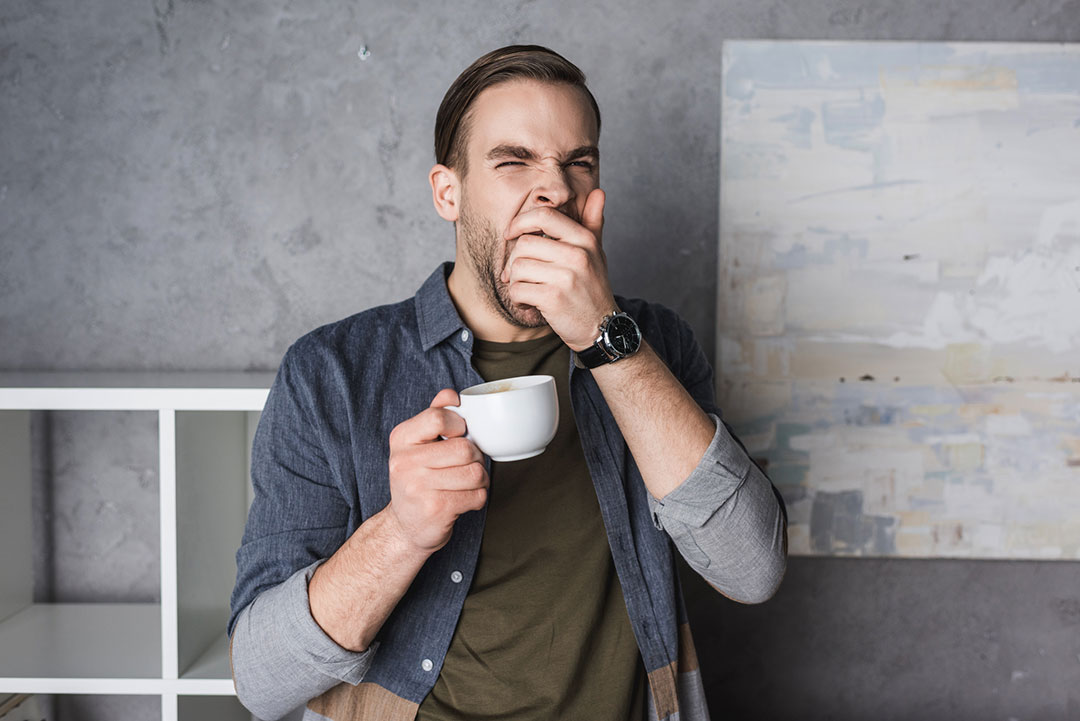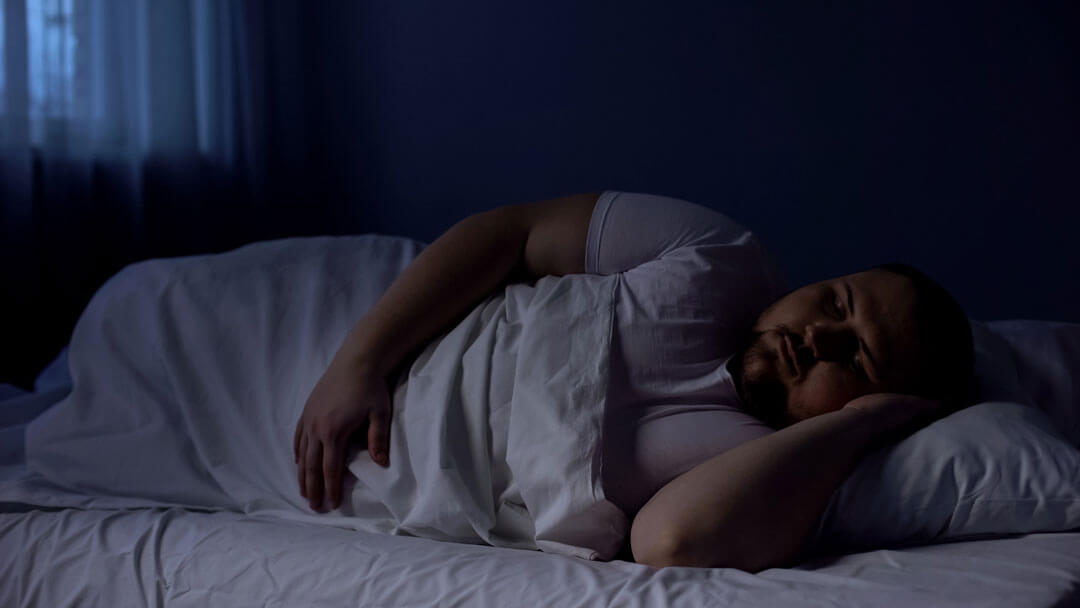Do you routinely find yourself feeling extremely groggy and tired, even after you’ve had a full night of sleep? Perhaps you’re taking naps and still feel exhausted. If you have trouble staying awake during the day, despite the number of hours you sleep and experience excessive daytime sleepiness, you may have hypersomnia.
What Is Hypersomnia?
Hypersomnia is a condition characterized by feeling excessively sleepy during the day, no matter how much sleep you had the night before.
The name hypersomnia also points to another common trait — excessive sleeping — with hyper meaning “too much” and somnia meaning “sleep.” Hypersomnia also negatively affects concentration and energy levels. Therefore, those suffering from hypersomnia tend to have a hard time functioning their best at work or throughout the day.
Many of us occasionally experience periods of fatigue during the day. Most often it occurs when we don’t get the recommended 7-9 hours of sleep. The feelings of exhaustion or fatigue are usually short lived. Once we get back into a healthy sleeping schedule we feel more energetic and awake once again during the day.
Yet for some, excessive sleepiness, can’t be remedied by getting more sleep. They have trouble staying awake during the day and can fall asleep anywhere at any time.
One of the more troublesome aspects of hypersomnia is that it often compels people to take numerous naps during the day. Rather than waking from these naps feeling refreshed, most wake feel irritated, groggy or disoriented. They most often provide little to no benefit for a person’s energy level.
Hypersomnia Symptoms
Beyond excessive sleepiness, symptoms of hypersomnia can include:
- Irritability
- Anxiety
- Fatigue
- Loss of appetite
- Memory problems
- Poor concentration
- Hallucinations
Hypersomnia vs Hypersomnolence
Hypersomnia is often used interchangeably with the term hypersomnolence. There is a slight difference worth pointing out, though. Hypersomnia refers to excessive daytime sleepiness, whereas hypersomnolence refers to both EDS and prolonged periods of nighttime sleep.
Hypersomnolence is characterized by many of the same aspects of hypersomnia, including a compulsion to take several naps during the day. The naps provide little to no relief from symptoms. These daytime naps can occur regardless of how many hours of sleep the person got the night before.
What’s The Difference Between Primary Hypersomnia and Secondary Insomnia?
Hypersomnia falls into two distinct categories: primary hypersomnia and secondary hypersomnia. Both have different causes and treatments, but they’re both connected by the same common bond: excessive sleepiness.
Primary Hypersomnia
Primary hypersomnia happens when no underlying medical problems are present. Again, the common theme for those suffering from primary hypersomnia is excessive sleepiness. But within that framework, certain types of hypersomnia, like idiopathic hypersomnia, can occur which we discuss later.
Secondary Hypersomnia
On the other hand, secondary hypersomnia is a byproduct of an underlying health problem. This can include sleep disorders like sleep apnea and restless legs syndrome, as well as other medical conditions, including Parkinson’s disease and kidney failure. These are health issues that can impact your sleep and leave you fatigued the next day, regardless of the amount of sleep the night before.
Idiopathic Hypersomnia and Examples of Primary Hypersomnia
Under the primary hypersomnia umbrella fall several variations of hypersomnia. One of those variations is idiopathic hypersomnia (IH), although the cause is unknown. IH is characterized by a few particular symptoms.
Symptoms of Idiopathic Hypersomnia
- difficulty remaining awake and attentive during the day
- Falling asleep unintentionally at inopportune times
- Difficulty waking up after sleeping all night or after daytime naps
Other indicators of IH include excessive sleeping which can be upwards of 10 hours at night. “sleep drunkenness” is another indicator. This is where a person vacillates between various stages of being awake up to four hours after initially waking up. This state can lead to people being violent, clumsy and irritable, and can sometimes occur following naps as well.
Sleep deprivation and idiopathic hypersomnia have similar symptoms. The difference however is that once someone who is sleep deprived gets additional sleep, most of the symptoms are resolved. This additional sleep is referred to as paying off a “sleep debt.” This isn’t the case for idiopathic hypersomnia. With IH, getting extra sleep does not erase the feeling of excessive sleepiness or other common symptoms associated with it.
The Difference Between Hypersomnia and Narcolepsy
Idiopathic hypersomnia is often compared to narcolepsy because both disorders share a few traits. There are a few key differentiators, too. Narcoleptics often suffer from nighttime sleep disturbances, which doesn’t tend to be an issue for those suffering from Idiopathic Hypersomnia.
Another distinct aspect of narcolepsy is that it can lead to a sudden compulsion to fall asleep, without any warning signs. This is unavoidable, whereas those suffering from hypersomnia can often force themselves to stay awake despite the overwhelming desire and need to sleep.
Kleine-Levin Syndrome
Other forms of primary hypersomnia include Kleine-Levin Syndrome (KLS). The exact cause of this syndrome is unknown, although a Stanford University study found that 72 percent of the cases studied were preceded by symptoms of infection. This leads some researchers to speculate that an autoimmune process may play a role in its development. Some also believe there may be a genetic predisposition to developing the disorder.
KLS is extremely rare. It can be dormant for much of the year before a rapid onset of symptoms. These symptoms may last for days to weeks. One of those symptoms includes sleeping for more than 20 hours in a day.
Although you can wake someone with KLS from sleep they may be irritable or confused and have trouble speaking. During awake hours, sufferers are often in a trance-like state, experience extreme hunger and hypersexualtiy.
KLS episodes are cyclical and most affected individuals display no symptoms between episodes. These episodes can last days to weeks and afterwards, the individual will return to their normal way of life.
What Causes Hypersomnia?
The cause of primary hypersomnia continues to elude researchers. Yet most agree it stems from an issue in the brain related to regulating the sleep-wake cycle.
As for secondary hypersomnia, this is a function of the underlying health issue causing it. It is commonly related to more well known sleep disorders like sleep apnea and narcolepsy, among others. It’s an increasingly common condition that actually affects up to 30% of people with sleep disorders, and points to more serious untreated health issues.
For example, sleep apnea is one of the more common causes of hypersomnia. By treating this underlying health condition, excessive fatigue can often be erased from the equation. This is why it’s important to be proactive in treating the sleep disorders and health issues that lead to hypersomnia.
Being proactive in seeking advice and possible diagnosis of hypersomnia could potentially help identify other serious health problems including Parkinson’s disease and chronic fatigue syndrome.
Related: 3 Hygiene Tips to Help You Sleep Easy Tonight
Diagnosing Hypersomnia
Diagnosing hypersomnia can be difficult because it shares symptoms with other sleep disorders.
If you’re experiencing extreme daytime fatigue, your doctor will want to rule out other possible health issues or disorders that commonly cause excessive daytime sleepiness (EDS). They’ll ask you questions to determine whether it’s a result of certain behaviors or sleep habits. Based on your answers, they can rule out whether other conditions such as sleep apnea are the cause.
A common starting point for sleep specialists when assessing Excessive Daytime Sleepiness (EDS) is the Epworth Sleepiness Scale to rate your EDS symptoms. They’ll ask how long you’ve experienced symptoms to help determine if you have hypersomnia. This is because IH is typically diagnosed after symptoms have lingered for a minimum of 90 days.
You may be asked to participate in an overnight polysomnogram (PSG) sleep study. This is a critical step because it’s used to rule out causes of secondary hypersomnia, including sleep apnea. Once the initial sleep study is completed, a second exam, the multiple sleep latency test, or MSLT, takes place. This often happens the day after your polysomnogram.
The MSLT looks at many of the same things as a PSG, including your heart rate and blood pressure, but it’s done during the day. The test records several short naps that last anywhere between 5-20 minutes. This is important because it measures sleep latency, or the time it takes to move from being awake to being asleep.
People suffering from Idiopathic Hypersomnia, the time it takes to move from awake to sleep tends to be 8 minutes or less. This is shorter than the 5-20 minutes it takes someone without the disorder to fall asleep.
Related: 5 Important Signs You Need a Sleep Test
Health Issues Connected to Hypersomnia
Another motivation to seek diagnosis, and possible treatment, for hypersomnia are the health ramifications that come with it.
Hypersomnia, again, tends to be a signal of a larger health problem that has gone untreated. As mentioned earlier, sleep apnea is often connected to hypersomnia. Left untreated, sleep apnea has been shown to increase your risk of heart failure by 140%.
Diabetes, depression, hypertension — also known as high blood pressure — and erectile dysfunction are also common health problems encountered by those suffering from sleep apnea. These are serious medical conditions that can shave years off a person’s life and make their day-to-day lives more challenging.
That’s why it’s critical to look at hypersomnia as a “check engine light” that should be inspected by a medical professional immediately. It can help you determine whether you have primary or secondary hypersomnia.
If you have secondary hypersomnia, you can treat the underlying health issue, and reduce your odds of suffering a medical emergency. If you have primary hypersomnia, a diagnosis can greatly improve your everyday life, and allow you to get the help you need.
Does Hypersomnia Go Away?
While there isn’t a cure for primary hypersomnia, there are treatments that can help make the disorder manageable.
Treatments for Hypersomnia
Treatment of hypersomnia includes prescription drugs, as well as lifestyle changes, including modifications to diet and your social calendar.
Treatment for secondary hypersomnia requires identifying the underlying health issue causing it. By identifying an underlying cause, like sleep apnea, you can not only help ease the symptoms of hypersomnia, but also target potentially bigger health issues at play.
Related: Sleep Apnea Symptoms: 7 Serious Signs You Might Have Sleep Apnea
Lifestyle changes can help, but altering your sleeping habits will not cure hypersomnia. Two lifestyle changes that may help include avoiding alcohol and caffeine — especially within three hours of going to sleep. It’s also important to try to keep the same bedtime every night. This allows your body to develop a natural sleep-wake cycle.
Related: 3 Hygiene Tips to Help You Sleep Easy Tonight
Telling others about your condition, just to make sure they’re aware of it and your needs, may also help. Finding Idiopathic Hypersomnia (IH) support groups is another great way to discuss your condition.
Although it may be difficult at times, remember to listen to your body. Don’t overextend yourself. If your body is telling you it needs rest, find time to take a quick nap, or rearrange your sleep schedule. This will allow you to get the most out of your waking hours.
If you are suffering from symptoms of hypersomnia, or are concerned it’s a sign of a health disorder, make an appointment with Sleep Centers of Middle Tennessee today. We’ve been treating sleep disorders for more than 25 years, and we’re here to help.




